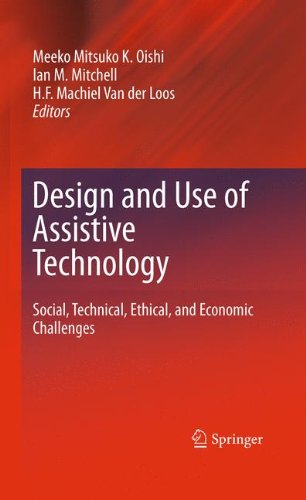

Most ebook files are in PDF format, so you can easily read them using various software such as Foxit Reader or directly on the Google Chrome browser.
Some ebook files are released by publishers in other formats such as .awz, .mobi, .epub, .fb2, etc. You may need to install specific software to read these formats on mobile/PC, such as Calibre.
Please read the tutorial at this link: https://ebookbell.com/faq
We offer FREE conversion to the popular formats you request; however, this may take some time. Therefore, right after payment, please email us, and we will try to provide the service as quickly as possible.
For some exceptional file formats or broken links (if any), please refrain from opening any disputes. Instead, email us first, and we will try to assist within a maximum of 6 hours.
EbookBell Team

5.0
28 reviewsDesign and Use of Assistive Technology provides an interdisciplinary approach to assess some of the major hurdles in creating effective assistive technology. Assistive technology must be integrated with clinical needs, user requirements, ethical considerations, and the social context of the technology’s use. Gaps between engineering design, clinical evaluation, and actual use often derail potentially transformative technologies that would otherwise enable independence and facilitate social connectedness. This volume gathers recommendations that span engineering, computer science, rehabilitation sciences, and ethics. This book: • Addresses difficult problems such as the inherent heterogeneity of users, privacy concerns in data collection and analysis, and incorporation of user perspective into the design and evaluation process • Discusses models for knowledge transfer of novel technologies, advantages and disadvantages of small markets, and regulations and standards to enable commercialization • Presents a framework for ethics of “accessible” technologies that differs from frameworks for engineering or medical ethics Design and Use of Assistive Technology demonstrates how multidisciplinary process improvements in assistive technology deployment have the potential to empower businesses, researchers, and nonprofit organizations to create and bring to market new devices that incorporate ethical, social, and clinical concerns to enhance people’s lives.